The Dye Preserve Jupiter, Florida, United States
Architect: Pete Dye (1989)
6,922 Yards, Par-72
Rating/Slope: 74.8/146
My Quick Review: Classic Dye. Angles, temptation and visual intimidation.
Of all the architects I've played, I find it most difficult to articulate Pete Dye's style and yet when you play one of his golf courses, they are unmistakably Pete Dye. The Dye Preserve, once called Cypress Links, is unmistakably Pete Dye. The course is laid out over 140 homeless acres and though this is not a constrained yardage on paper, this acreage includes several water hazards and wetland areas (as well as the clubhouse, driving range, chipping and putting greens). The course feels very tightly routed and walk backs are required in several places.The Dye Preserve has perhaps the greatest variation in bunker styles I have seen on a Dye design. Interestingly, I've seen all of these styles before, many of them at The Golf Club. For example, he offers the massive and low-slung waste areas on the 9th and 10th (as seen on the 2nd and 4th at The Golf Club). There are scraggly, free-form bunkers on the 1st and 7th (see TGC 1st). There are tiny pot bunkers, raised pot bunkers (French Lick Dye), raised bunkers, floating bunkers and hidden bunkers. The bunkers are generally strategic in nature, but it is probably fair to say The Dye Preserve is over-bunkered. I'd love to hear some thoughts on the mounding at The Dye Preserve. It didn't bother me, but it is very noticeable.More than anything, The Dye Preserve is another example of Dye's understanding of angles and the Line of Charm/Line of Instinct. The golf course is full of decisions and often requires the golfer to resist temptation. It is far better than the average Florida golf course.The clubhouse at The Dye Preserve (TDP) is a nice change from the many 30,000+ sq. ft. clubhouses that are found in the Palm Beach / Jupiter area. A well-appointed men's locker room takes up nearly half of the space in the comfortable clubhouse, and there is a very low-key and relaxed vibe to the club. I don't often take pictures of urinals, but these ones in the men's locker room are pretty cool looking with the antlers overhead. Onto the golf course. If there are two themes at TDP, I would say they are (1) the golf course looks harder than it plays thanks to a combination of visual deception and visual intimidation, and (2) angles are used well throughout. A very constrained feel to the opening tee shot, but there is ample corridor width and the bunker through the fairway is some 300 yards to reach -- it's purpose, I presume, is to intimidate.
Onto the golf course. If there are two themes at TDP, I would say they are (1) the golf course looks harder than it plays thanks to a combination of visual deception and visual intimidation, and (2) angles are used well throughout. A very constrained feel to the opening tee shot, but there is ample corridor width and the bunker through the fairway is some 300 yards to reach -- it's purpose, I presume, is to intimidate. 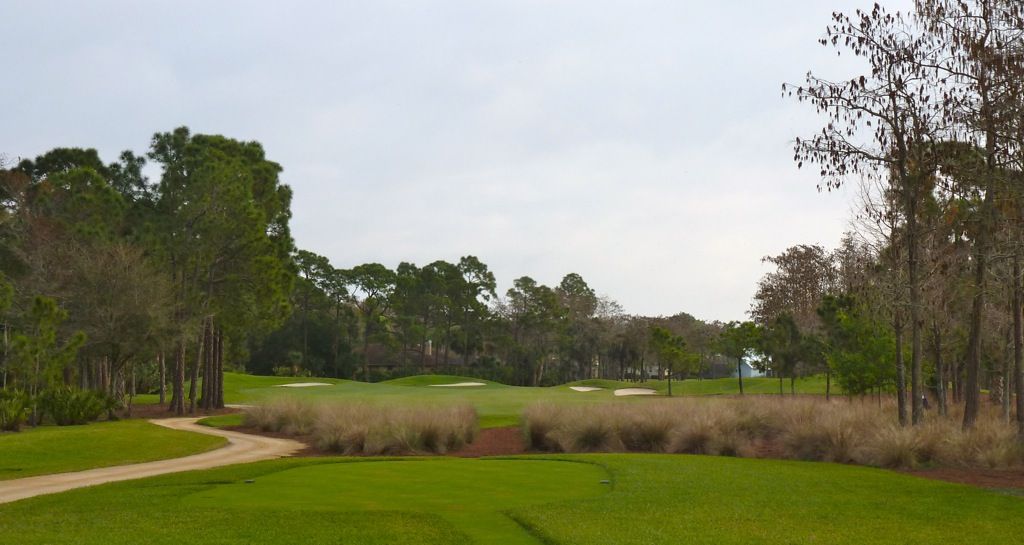 The mid-length par-5 1st bends right first and then left at the green. By the time we reach the first green we have already seen three different style of bunkers from Dye.
The mid-length par-5 1st bends right first and then left at the green. By the time we reach the first green we have already seen three different style of bunkers from Dye. The second hole is a short par-4 that moves left. Golfers that stay away from the inside of the dogleg and play toward the fairway bunkers on the right will avoid this approach view (from the left), which is partially blocked by mounding.
The second hole is a short par-4 that moves left. Golfers that stay away from the inside of the dogleg and play toward the fairway bunkers on the right will avoid this approach view (from the left), which is partially blocked by mounding. The third hole appears to be an all-or-nothing par-3 from the tee..
The third hole appears to be an all-or-nothing par-3 from the tee.. but there is ample room to miss right, and even some room to miss left. Bailing right leaves a speedy recovery down the slope of the green.
but there is ample room to miss right, and even some room to miss left. Bailing right leaves a speedy recovery down the slope of the green. The 4th is one of the longest par-4s on the course. Dye offers the golfer the option to run the ball onto this very large green.
The 4th is one of the longest par-4s on the course. Dye offers the golfer the option to run the ball onto this very large green. 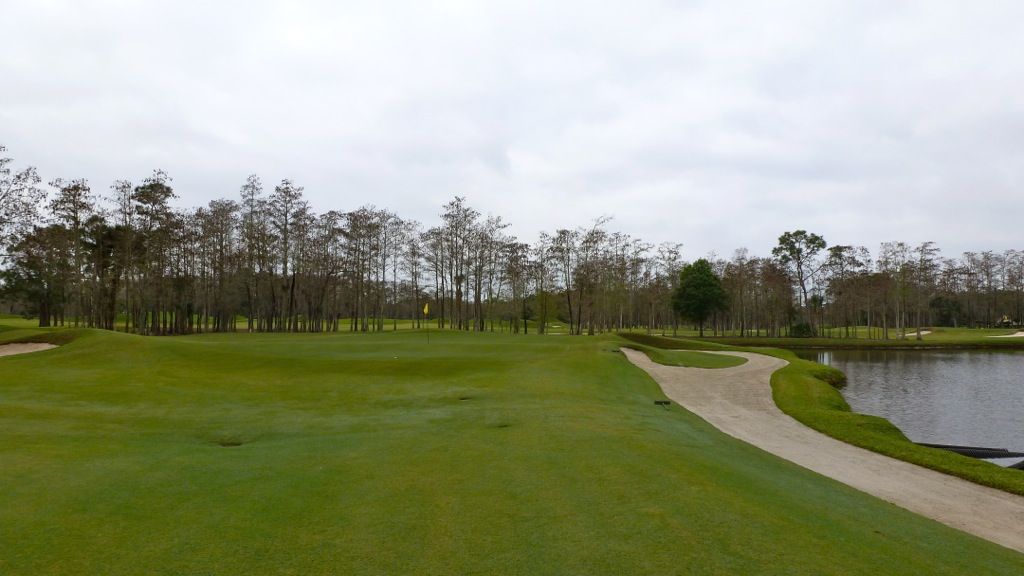 The 5th is a very good short par-4. At only 280 yards, the hole is driveable for some, but for many the play is out to the right. The nearer the water the golfer plays, the better the view on the approach...
The 5th is a very good short par-4. At only 280 yards, the hole is driveable for some, but for many the play is out to the right. The nearer the water the golfer plays, the better the view on the approach... As the bunkered mound on the right will completely obscure approaches from the right.
As the bunkered mound on the right will completely obscure approaches from the right.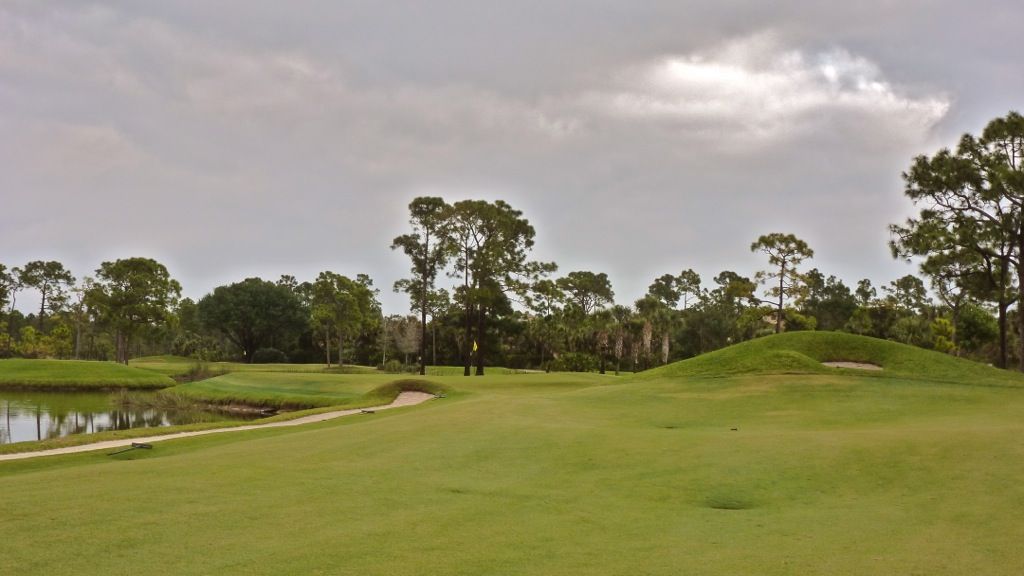 Dye's heavily mounded 6th hole may be hated by some. While the tee shot is not overly engaging, the second shot must be well-placed as approaches from the left will be completely blind...
Dye's heavily mounded 6th hole may be hated by some. While the tee shot is not overly engaging, the second shot must be well-placed as approaches from the left will be completely blind... played to a green encircled by mounding.
played to a green encircled by mounding. The mid-length par-3 7th offers a long and narrow green. Though bunkers lay on 3 sides of the green, they are all well off the putting surface and all reasonably well-struck tee shots will find green or fairway grass.
The mid-length par-3 7th offers a long and narrow green. Though bunkers lay on 3 sides of the green, they are all well off the putting surface and all reasonably well-struck tee shots will find green or fairway grass. The 8th is another mid-length par-4 that moves right. The 9th is one of the best holes on the golf course, and thanks to a new tee can now play as a 500-yard par-4. The tee shot is played over a diagonal waste bunker, with a carry of some 225 yards required to carry on a line just left of the pot bunker in the distance.
The 8th is another mid-length par-4 that moves right. The 9th is one of the best holes on the golf course, and thanks to a new tee can now play as a 500-yard par-4. The tee shot is played over a diagonal waste bunker, with a carry of some 225 yards required to carry on a line just left of the pot bunker in the distance. Bold tee shots down the left leave much easier approaches into this angled green. For many the approach will be played with a long iron or fairway wood, and approaching from the right which requires a carry over the waste/pot bunkers, is a near impossible proposition. Those that do play right from the tee are offered ample room to play left of the green on the approach -- a perfect half-shot penalty.
Bold tee shots down the left leave much easier approaches into this angled green. For many the approach will be played with a long iron or fairway wood, and approaching from the right which requires a carry over the waste/pot bunkers, is a near impossible proposition. Those that do play right from the tee are offered ample room to play left of the green on the approach -- a perfect half-shot penalty.
Another diagonal carry on the par-5 10th, but this time Dye takes away the bailout option.

Tee shots challenging the longer carry leave a preferred approach to this angled green.

The 11th is a lengthy par-4 that moves right and another hole where mounding makes the hole appear more difficult than it plays.


A straightaway par-4 at the 12th. Note the free-form bunkering on the right, similar to the bunkers right of the first fairway at The Golf Club.
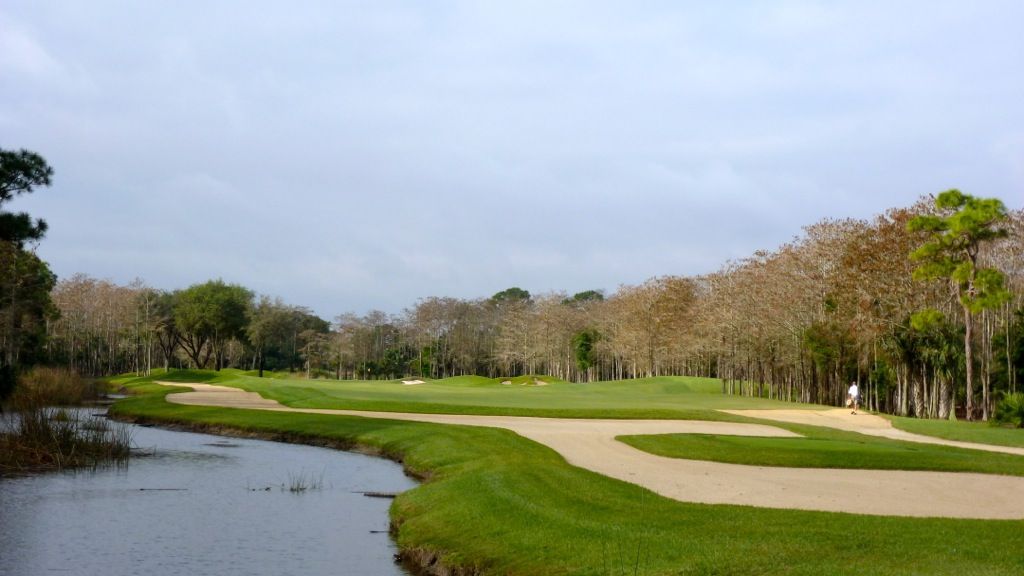
The 13th is a tremendous par-3, which often plays downwind to a plateau green. There really is no preferred miss as ping-pong risk is high from all angles.



The 14th is a short par-4 with an approach to a putting surface that is completely blind from the fairway.
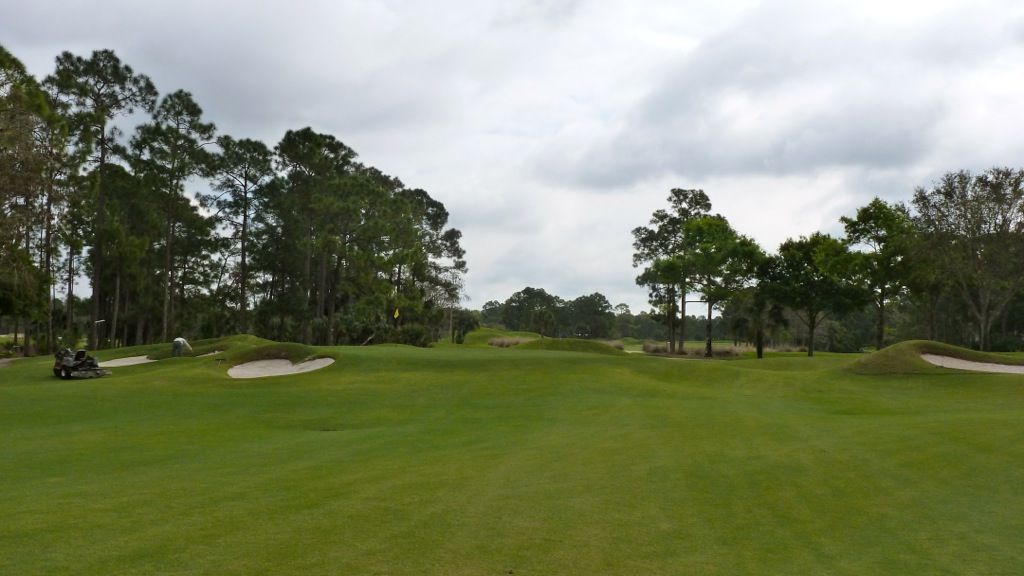
The tee shot at the par-5 15th is very similar to the tee shot on the 10th. Playing near the water yields a yardage advantage, and many will be tempted here as this mid-length par-5 may be reachable in two.


The 17th is a monstrous par-3 that plays 245 yards from the championship tees and 220 yards from the 'back' tees. There is ample room to bailout, and I was told that little pot bunker sees a lot of action.

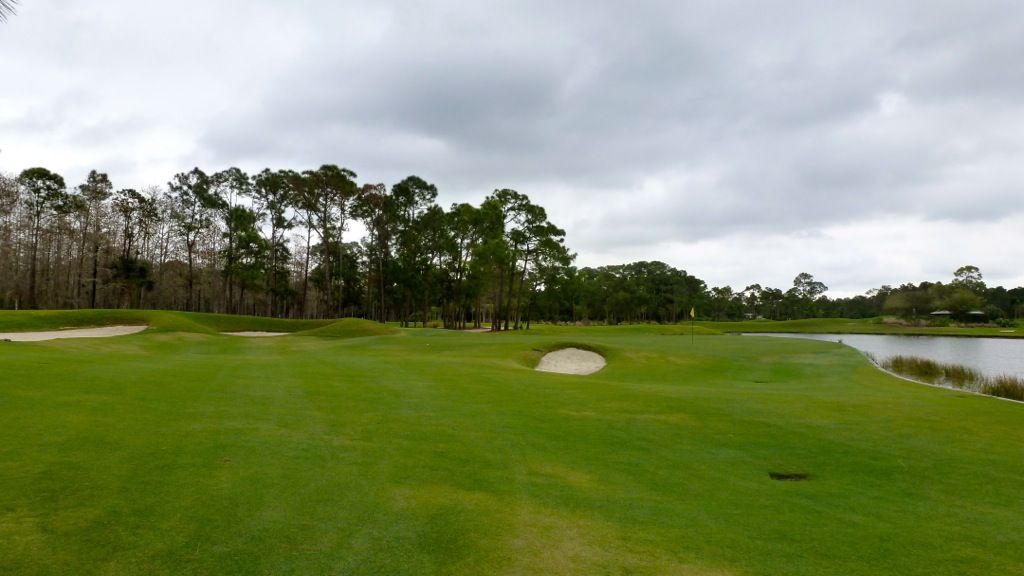
One final diagonal carry on this excellent and difficult finishing hole.

Tee shots down the left give the golfer the option of playing a running approach that uses the contours short of the green.
































